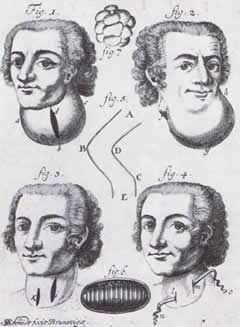August 2008 Newsletter: History of goitre management

The German anatomist and surgeon, Lorenz Heister was born in Frankfurt in 1683 and appointed to the Chair in Surgery and Anatomy in Altdor. In his textbook “Chirurgie” we find some of the earliest descriptions of various medical and surgical approaches for the management of goitre. “In the case of a recent goitre the patient must be given a good diet and suitable sudorific and purgative drugs. It is said to be a beneficial practice if people who are getting a goitre wear a necklet of lead right at the beginning which, while not always successful, at least prevents the goitre from growing any bigger. Many recommend that incipient goitres should be stroked with the hand of a dead man, preferably one that has died of consumption. However in the case of old goitres which cannot be dispersed by drugs but nevertheless remain mobile, it is possible in some cases to remove them completely. Mobile goitres can be removed in three ways:
- Binding (ie ligation), if they have a thin root which is uncommon.
- Cutting: if the growth is small, a long incision is made above it; if it is large, a cruciform cut is made, whereupon the lips of the wound are separated and the growth is seized with the hand or tenaculum and it is enucleated like a sebaceous cyst. A needle and strong thread can also be passed through the growth so as to form a handle on which to pull. Helpers should draw apart the wound and dry the blood with swabs. If there is profuse bleeding from the arteries near the root, this must be staunched with a good haemostatic drug, or the arteries are ligated, or a cautery applied to them.
- Corrosion: Since goitres are growths which cause no pain there are few, particularly among the poor, who want to be operated on. If such people want to be treated without an operation, the growth can be cauterized like other growths by corrosion, but this is reliable only in the case of mobile benign tumours: because otherwise the large arteries and nerves in the throat might be attacked and eaten away with death ensuing, or the goitre may be turned into a cancer”
From Merke FE. History and Iconography of endemic Goitre and Cretinism. MTP Press, Lancaster, 1984: 187.













